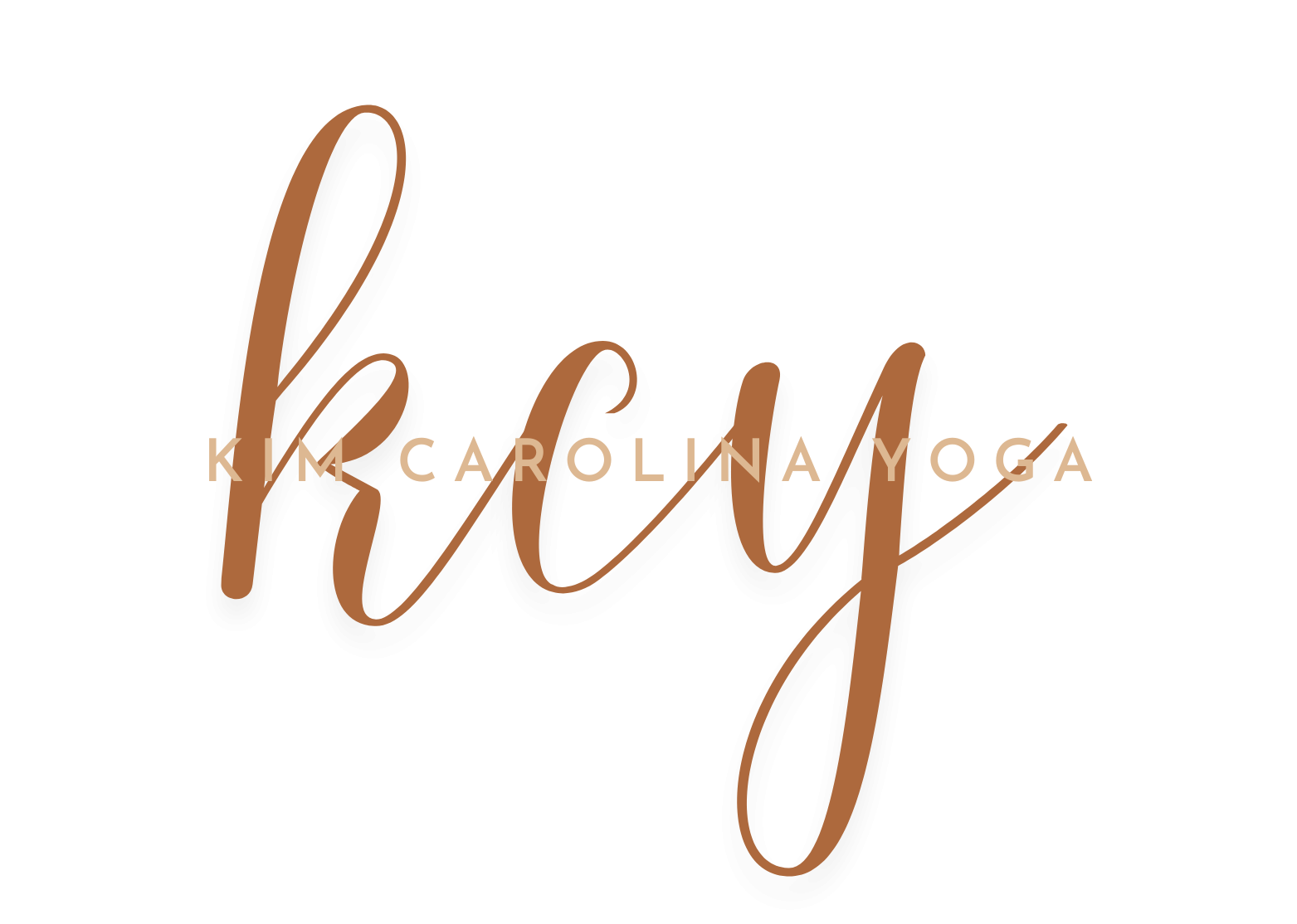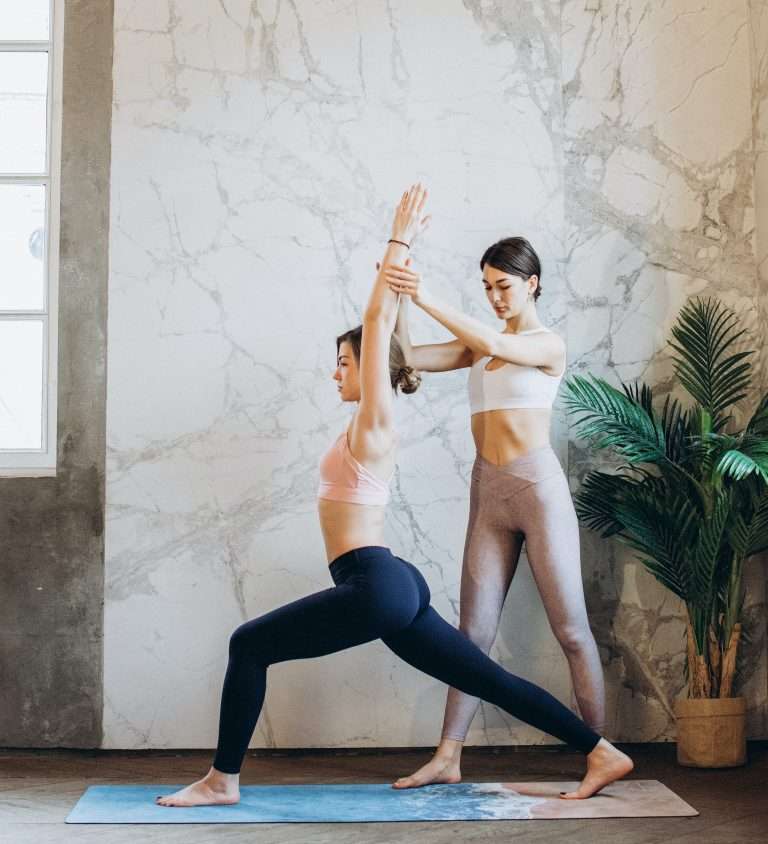Yoga Class Themes: Exploring 9 Possibilities to Theme a Yoga Class

Are you getting tired of theming your yoga class around a peak pose or find yourself creating the same yoga class themes and sequences over and over? Per se there is nothing wrong with that, of course. After all, Ashtanga Yoga also repeats the same series, which helps to create a moving meditation. However, sometimes it can be nice to change things up – and also a little challenge for us as yoga teachers to step outside our comfort zone 😉
Yoga is not just a physical practice but a journey that encompasses the mind, body, and spirit. One of the beautiful aspects of yoga is the ability to infuse themes into your classes, creating a deeper and more meaningful experience for both yourself as an instructor and your students. In this article, we will delve into the boundless possibilities of different ways to theme a yoga class.
Remember to grab your free copy of the Sequencing Vinyasa Classes Workbook for five easy-to-follow steps to create comprehensive, safe, and creative yoga classes.
Let’s explore the nine inspiring yoga class theme approaches that will help you create transformative and unforgettable experiences on the mat.
1. Conceptual Yoga Class Themes
Conceptual themes provide a broad and versatile framework for your yoga class. Choose an idea or concept that resonates with you and your students, such as gratitude, resilience, surrender, or inner strength. Build your class around this theme, incorporating relevant poses, breathwork, and philosophical teachings. For example, a class focused on gratitude might include heart-opening poses, guided meditations on gratitude, and reflections on appreciating the present moment.
Bonus: Here is a little example of what a guided Gratitude Meditation could look like:
Bring your attention to your heart centre, the space in the middle of your chest. Imagine a warm, radiant light glowing within your heart, growing brighter with each breath you take.
Take a moment to reflect on your day and bring to mind three things that you feel grateful for. They can be small or significant, moments of joy, experiences, or connections. Allow these moments to come into your awareness and hold them in your heart.
As you hold each moment of gratitude in your heart, take a deep breath in and silently say to yourself, “I am grateful for…” and then state the specific thing you are grateful for. It could be something as simple as a smile from a stranger or a kind word from a loved one.
2. Elemental Yoga Class Themes
Nature offers a limitless source of inspiration. Connect with the elements of earth, water, fire, air, and space to create an elemental-themed yoga class. Each element represents unique qualities that can be explored through asanas, pranayama, and visualisations.
For instance, an earth-themed class might emphasise grounding and stability with standing poses like Tree Pose (Vrkshasana) and Mountain Pose (Tadasana), while a fire-themed class could incorporate dynamic sequences and powerful breathwork to ignite the internal fire of transformation, such as core work with poses like Boat (Navasana) or arm balances, such as Bakasana.
3. Seasonal Themes
Aligning your yoga class with the current season allows you to tap into the energy and essence of that time of year. For example, in spring, focus on renewal, growth, and rejuvenation. Incorporate poses that stimulate detoxification and open the heart, such as twists and backbends. In winter, create a class that cultivates introspection, stillness, and warmth with grounding poses, gentle flows, and nurturing restorative postures.
You can also base your yoga class themes on the cycles of the moon. The New Moon could represent the intention setting at the beginning of class. The warm-up and dynamic class section could represent the waxing phase of the moon, culminating in a peak – Full Moon – and using the moon’s waning phases to cool down. The Dark Moon here would represent the final relaxation and end of the class.

4. Inspirational Themes
Words have the power to uplift and inspire. Select a quote, poem, or a line of wisdom that resonates with you and your students. Use this inspiration as the central theme for your class, weaving the chosen text throughout the practice. Invite your students to reflect on the deeper meaning behind the words and encourage them to carry this inspiration off the mat.
Incorporate moments of stillness and contemplation to deepen the connection to the chosen theme. This is a nice way to also connect the on-the-mat yoga practice to off-the-mat living and mindset.
5. Chakra Themed Yoga Class
Explore the subtle energy centres of the body known as chakras. Dedicate your class to activating and balancing a specific chakra or a sequence that incorporates all seven chakras. Incorporate poses, pranayama techniques, and visualisations that correspond to each chakra, helping your students enhance their energetic well-being and harmonise their body and mind.
For example, you could focus your yoga class theme on Muladhara Chakra and create a flow that incorporates seated poses, such as forward folds, and standing grounding poses, such as the Warriors. If you’d like to include all seven Chakras, you can start with grounding standing poses (Warriors) and hip openers (such as Malasana), move onto core strengthening poses, progress to heart opening poses for Anahata and Vishuddha Chakra (such as Ustrasana). To finish, you can incorporate traditional headstand (Salamba Sirsasana) for the Crown Chakra.
6. Theme Based around One Peak Pose or Prop
Focus your class on a specific peak pose or a prop such as a strap, block, or bolster. Centre your sequencing and instructions around building up to and exploring variations of that pose or prop. This approach allows students to deepen their understanding of the peak pose’s alignment, modifications, and benefits, providing a sense of accomplishment and growth.
Including specifics props is especially nice to remind students that props are our friends and support. It can also allow more advanced practitioners come back to basics and explore known poses in a different light – such as finding more space in Trikonasana or Ardha Chandrasana with a block.
7. Yoga for the Koshas
The koshas represent the different layers or sheaths of our being, including the physical body, energy body, mental body, wisdom body, and bliss body. Create a class theme that explores and nurtures each of these layers. Incorporate asanas, breathwork, meditation, and self-reflection exercises that target each kosha, guiding your students on a journey of self-discovery and holistic well-being.
A yoga class theme around the Koshas is also a nice reminder that yoga is a holistic practice that benefits not only our physical flexibility and strength, but also holds many benefits for our emotional and mental well-being. You could provide your students with simple tools that they incorporate into their off-the-mat daily living.
8. Specific Body Part or Muscle Group
Design a class focused on a specific body part or muscle group, such as shoulders and neck. Coming from a fitness background, this is still one of my favourite ways to theme a yoga class. You can target a particular area allows you to offer specific stretches, strengthening poses, and mindful movements to release tension, improve mobility, and create space within that area of the body. For a ‘Shoulders & Neck’ class, incorporate poses like shoulder openers, neck stretches, and upper back release to promote relaxation and flexibility.
These types of yoga class themes also allow you to target students with a specific issue of lifestyle. For example, shoulders, neck, back, and hip openers can be very beneficial for people working in an office all day.
9. Themed Flow for a Specific Purpose
Craft a class theme that caters to a specific purpose or desired outcome, such as increasing energy, reducing anxiety, or cultivating calmness. Design a sequence that incorporates poses, breathwork, and meditation techniques known to support the intended purpose. For example, for an energy-boosting flow, include dynamic and invigorating poses like Sun Salutations, backbends, active inversions, and energising breath techniques, such as Surya Bedhana.

The beauty of yoga lies in its limitless potential for creativity and self-expression. By incorporating themes into your yoga classes, you infuse depth, intention, and inspiration into the practice. Whether you choose conceptual, elemental, seasonal themes, or explore chakras, peak poses, the koshas, or specific body parts, the possibilities are endless.
Allow your authentic voice and passion to guide you in creating transformative experiences on the mat, fostering growth, and awakening for both yourself and your students. Embrace the art of thematic yoga classes, and watch as your classes become spaces of profound exploration, connection, and transformation.
Want a step-by-step guide to apply these inspirational yoga class themes? Grab your free copy of my Vinyasa Sequencing Workbook and start creating amazing classes today!






